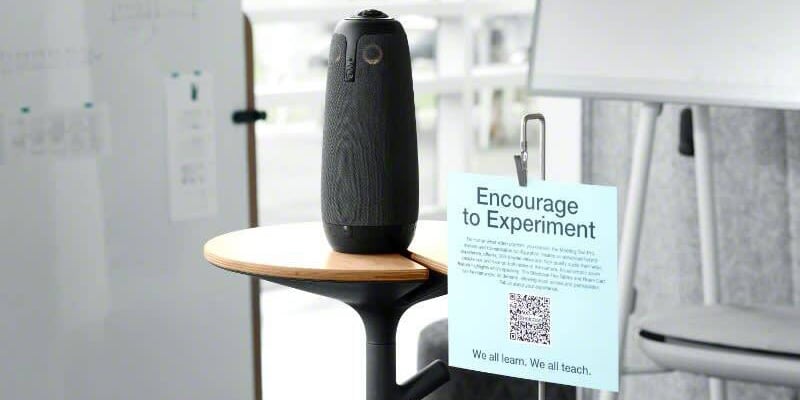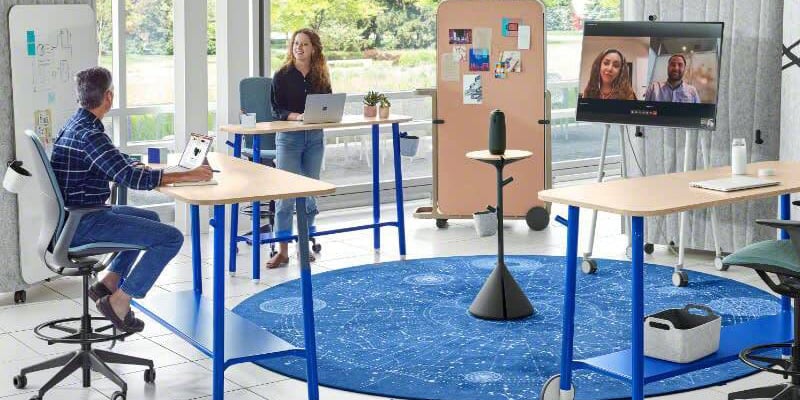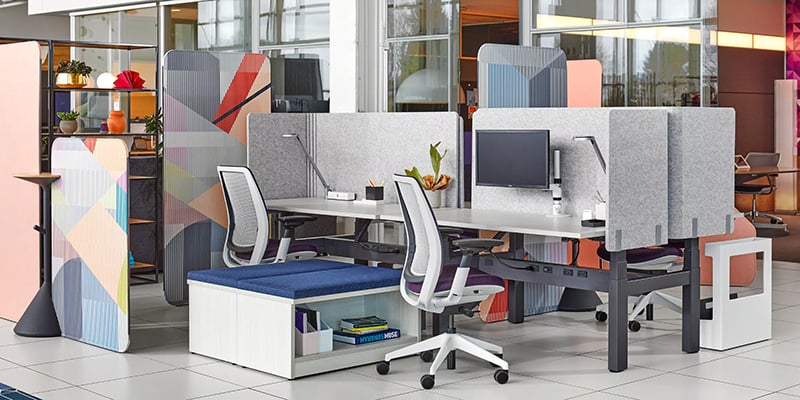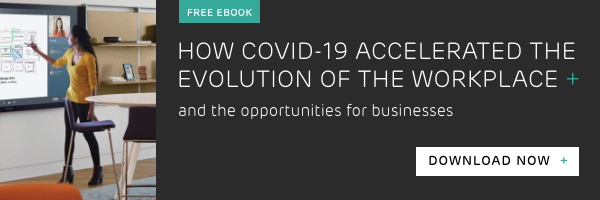It’s fair to say ‘Freedom Day’ turned out to be a bit more complicated than was originally expected. On Sunday, nightclubs filled up with excited punters, while on Monday Boris Johnson flip-flopped into isolation and many commuter trains and workplaces remained half empty. So, what happens next?
In truth, the transition to 'normality and more office based working was never going to be achieved in a single ‘big bang’. The question now is, what should we be doing to keep the momentum going towards more populated and productive shared workspaces?
The plan for 'Freedom day'
In early July, Prime Minister Boris Johnson announced the imminent end of all the current mandatory restrictions on most of our movements, working and social lives.
Now, in this 4th step of the easing of lock down, the government have removed outstanding legal restrictions on social, professional contact and life events. Social distancing has ended, the wearing of face masks is no longer mandatory, there are no legal limits on gatherings, and the guidance to work from home where possible has also been relaxed.
On this last point Johnson was adamant
“The key thing is the government is no longer telling people that it’s necessary that they should work from home and the rest is really for employees and employers to work out for themselves,”
In fact, for some time Johnson has been envisaging a full return to the social and commercial lives we once knew so well:
"I'm pretty certain - and I know this is contested - but I'm pretty certain that eventually our town centres and our city centres are going to be full of bustle, full of people wanting to interact again in the way that they always have done."
That was music to the ears of company bosses who want to bring their workers back to the workplace to kick start more collaboration, not to mention the city centre pubs, sandwich and coffee shops that revolve around servicing a large commuter economy.
And now 'freedom day' has passed and the reality is, the dreamt of full return to normality is still some months way.
Freedom Day? Big bang or damp squib?
But the 19th July date was never about instantly throwing caution to the winds and the world magically becoming the overcrowded, unrestricted place we knew and (sometimes) loved. No matter what Johnson initially had hoped for.
As we approached ‘freedom day’ London transport quickly said that they wanted passengers to keep wearing masks - and other sectors have followed suit. It soon became clear that caution and control was what most people wanted as we took this next step forward.
Gradual progress will bring great rewards
Luckily when it comes to the workplace, we can exercise exactly this kind of control. We can work carefully and collaboratively with our people to make the transition to more office based working as seamless and productive as possible.
And most companies have been doing just that - taking a gradual and responsible approach to getting people back into the office. For example, the Bank of England are only requiring staff to come in one day a week, and only from September. The Old Lady of Threadneedle street won’t be bursting at the seams just yet.
Right now there are three overarching principles that we need to keep in mind as we navigate the post 19th July movement back to a better workplace:
1. Health and Safety First
As we’re welcoming back more of our people to shared workspaces more of the time, the government left the details of our future working practices to be thrashed out on our own.
And that’s probably for the best. We all have different concerns and needs around returning to office settings, and businesses need to be sensitive to this while not being subject to unnecessary regulation.
Whilst distancing is no longer mandatory there are those who still need to keep control over the space around them. There are plenty of examples of legal clashes between employers and workers happening around the world where the compulsion to return is being challenged because of fears around health.
Ensure you’re giving people control over their own H&S
If you haven’t already considered this - work out how you intend to keep workers safe and respectful of each others’ specific requirements for space and distance.
- Providing more open and well-ventilated spaces for people to work independently and collaboratively is vital
- Focus on larger spaces with flexible furniture options for privacy and acoustic control
- Biophilic features and moveable screens can help subdivide big spaces into more intimate meeting areas while still allowing for distancing and suitable ventilation
- Communal areas with lots of different seating options including benches, tables and sofas - supported with moveable power packs - will give individuals the choice to distance and control the space around them if they need to.
- Keep sanitisation products available throughout the business and ensure cleaning regimes reflect the expectations of your people.
- Build confidence by providing a mix of industrial and portable purifiers with Hepa filters to improve air quality
Measure effectiveness
If you are welcoming people back right now, you need to carefully monitor the success of the initiatives you’re taking to protect them.
Observe how spaces are being used collectively and by individuals - what can you learn from the way they are being inhabited? Is the business comfortable with the balance of occupation vs personal comfort levels?
Are there unnecessary and unwelcome bottle necks in the building, are some spaces designed for solo use being taken over by groups - do you need to police this? Is the staggering of work days/start times preventing overcrowding - do you need further measures to be introduced? Ask your FM team to support you in creating metrics to monitor the use of space and the density of occupation if you can.
In Steelcase offices, management have been using QR codes displayed around the business to solicit feedback on the success of their changes and some of their prototyping ideas.

2. Focus on communication
We know that it won’t all be plain sailing from here on in. The government and your business may well need to increase the level of controls if there are further unexpected COVID spikes or new variants emerge.
With this in mind, having very clear channels of communication (that can operate both ways) is vital so that these changes can be announced quickly and efficiently.
But what’s important now is that your short/medium and long term expectations are being communicated.
If you haven’t already done so you should use the 19th July change in the law to clearly set out your road map and your plan for workplace return to all your workers:
- Explain the changes you’ve made to help everyone returning feel safe
- Explain what you expect from your workers to help make this happen
- Explain the changes you’ve made to improve working experiences overall
- Let your people know who they can reach out to for more information if needed
- Ask for their feedback to improve your approach
3. Experiment
Helping to build a dynamic return to work process is not a ‘set and forget’ undertaking.
If you think your team and your business will profit from time spent together in the office, you’ve got to build the spaces that reflect the new expectations of a workforce used to complete flexibility and ownership of their working days. And you’ve got to be prepared to tweak and change your solutions based on their success or failure to engage.
All the research says that there’s an expectation that people want to re-engage with each other in the workplace. But we can’t expect our people to be enthused if nothing has changed; if the freedom to come back to work means nothing other than a return to another kind of inflexibilty and restriction.
We need to give our workers the flexibility to work in the way they want to if we’re going to be successful at bringing them together. Our spaces should give them the ability to shift between ‘me work’ and ‘we work’; to move easily from fixed to fluid work settings, as well as open and enclosed spaces. These choices will give us the capacity to do different kinds of work and to choose to work in a way that feels ‘safest’ to us.
Collaborate and innovate in social hubs
But we also think ‘social hubs’ are going to become increasingly important to encourage people to return to the office and make their time together more productive when they do. These dynamic spaces are designed to be a locus for all the collaborative activity demanded by modern business.
They are spaces where people can gather to eat, drink and talk both informally and formally. Where furnishings are designed to encourage group ‘town hall’ style conversations and different configurations of group work. Where people can perch at benches, sit at tables or relax in comfy armchairs to shift their focus and energy throughout the day.
They can also be used to host experimental technology or test new ways of working so that workers can feel empowered and part of an ever-improving professional team.
These are just the kind of inspirational and sociable 'third spaces' that can galvanise and re-energise our post lockdown return. And we can always be using feedback and observation to keep tweaking them to improve their utility and performance.
What next?
Freedom day may not have been ‘a big bang’ but it has been a major step forward.
We now have the opportunity to work with our people to reimagine the workplace experience. It's our chance to recapture the connections and sense of purpose that makes work worthwhile.












